In 1897, Cambridge University held a vote to decide whether its women students should be allowed to take degrees. Posters around town proclaimed ‘No Gowns for the Girtonites’ and ‘Frustrate the Feminine Fanatics’, while special trains were arranged to bring alumni up from London for the ballot. Ladders were erected outside the Senate House, where the vote took place, so that extra entrances and exits could be provided to the building via windows.
When the results were announced, the proposal was resoundingly defeated. 1,707 had voted against degrees for women, while only 661 had voted in favour. A huge mob of undergraduates, gathered outside the building, threw fireworks, eggs and confetti in their exuberance. A passing librarian scooped up some of the detritus, which now sits – faded, but instantly recognisable – in a glass case at ‘The Rising Tide’, a powerful exhibition at Cambridge University Library, marking 150 years since the foundation of the first women’s college, which sets out to explore ‘the history of women’s struggles for equality within the University’.
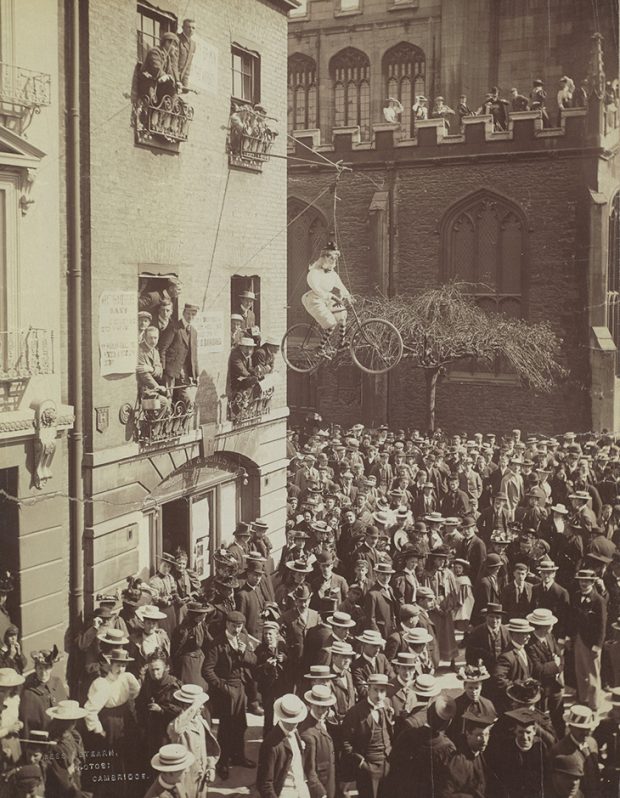
The campaign for women to be awarded full degrees in 1897: an effigy of a female undergraduate hangs from the first floor of what is now the Cambridge University Press book shop.
Girton, Cambridge’s first college for women, opened with five students in 1869. Its foundation was thanks to the efforts of Emily Davies, whose zeal for fundraising, promotion and persuasion is evident from the brochures, letters and petitions on show here. Unlike the founders of Newnham College, which opened two years later to offer women a more flexible programme of study, Davies was convinced that women should undertake the same work as men, and be admitted to the same examinations, in order to prove their intellectual equality. Responding, in a letter displayed here, to a suggestion that women should simply establish a separate university rather than attempt integration at Cambridge, she insisted that ‘on general moral grounds we think it very desirable that men & women should have substantially… the same education’. The numerous crossings-out and flourishes make her fury clear.
Neither women’s college was considered part of the university: students attended lectures accompanied by chaperones, and visited the university library only within strict hours. Nonetheless their students achieved remarkable success, once (from 1881) women were allowed to sit examinations, even if their marks were recorded only unofficially: in 1887 Agnata Frances Ramsay (represented here by a striking portrait) became the only student to be placed in the first class in the Classical Tripos, while in 1890 the top position in mathematics was taken by Philippa Fawcett (a photograph of her reading serenely in a library captures with a blur the ghostly swish of a page turning). A second vote on degrees, in 1921, was defeated again, after which a mob marched on Newnham and vandalised its gates. Cambridge remained the last university to allow women full membership, not granting them degrees until 1948. (In 1998, a special graduation ceremony was held for students who completed their degrees before this point: photographs from that day are some of the most joyful in the show.) The number of women undergraduates was capped at 20 per cent until 1987 (when in 1960 it was proposed that the new Churchill College should be co-educational, an alarmed advisor suggested that this ‘would be like dropping a hydrogen bomb in the middle of the University’). When colleges did begin to mix their intakes in the 1970s, there was outcry at Clare College when soft toilet paper was provided for women students. Luckily, in this case, resolution was reached and the shiny variety was banished for good.
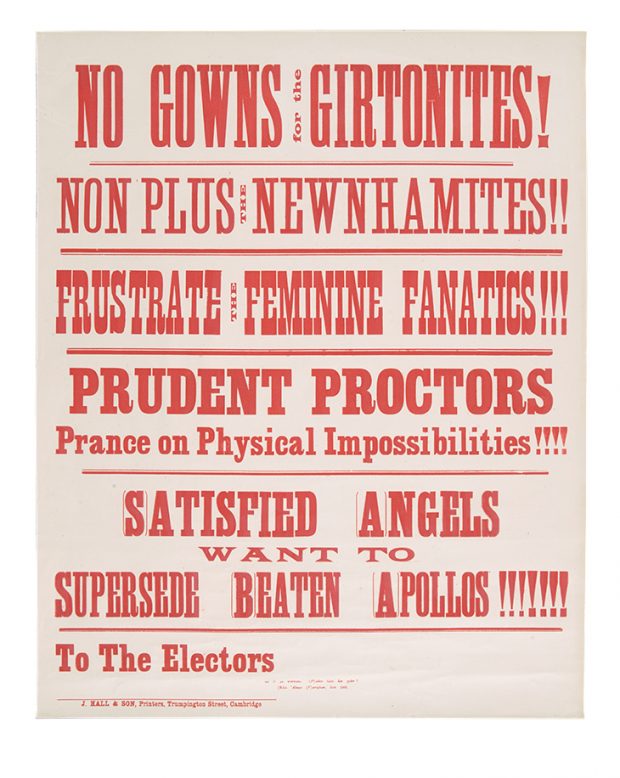
Poster encouraging members of the university to vote against the awarding of degrees to women at Cambridge in 1897. Reproduced by kind permission of the Syndics of Cambridge
The exhibition unfolds in loosely chronological order, with themed cases offering excursions into women’s participation in sport, drama and college magazines. The majority of exhibits are documentary – letters, pamphlets, rulebooks, posters – which reward close reading, but there are some visual spectacles too: an uncomfortable-looking Newnham tennis dress, and – excitingly – a gown worn by one of the ‘steamboat ladies’, women who travelled to Trinity College Dublin, between 1904 and 1907, to receive the degrees Oxford and Cambridge refused to confer. Upstairs, to accompany the show, the library corridors are hung with an exuberant range of portraits of Cambridge women, from Dorothy Hodgkin and Rosalind Franklin to Baroness Hale and Sonita Alleyne. The exhibition’s curators – Lucy Delap and Ben Griffin – emphasise that women’s roles at the university have always extended well beyond the fight for academic recognition: a dedicated section pays tribute to the work of gardeners, bedmakers and cooks, while a portrait from 1793 of Elizabeth Briggs, Laundress to Magdalene College, sits alongside the breviary of Marie de Saint Pol, who founded Pembroke College in 1347. A case of magazines and letters from the 1970s shows tentative solidarity between town and gown in the establishment of a nursery action group and campaigns for Wages for Housework and a women’s refuge.
In part, the story this fascinating exhibition tells is one of success – a tale of plucky pioneers and activist perseverance across a century of opposition and setbacks. It is also the story of Cambridge’s transformation from an institution geared towards the clergy – until 1856, only members of the church were allowed to graduate — to a modern educational establishment. But it is also a sobering account of exclusion and division – not only between men and women, but between different classes and races – that is far from overcome today. Among the exhibits – yet demanding to be taken out of its case and read – is A Fly Girl’s Guide to University (2018), a book written by four women of colour, outlining from their undergraduate experience how starkly Cambridge remains a place of ‘power, pervasive whiteness and exclusivity’. The ‘rising tide’ of the exhibition’s title – referring to a 1994 Cabinet Office report on women in science and technology – is a pertinent reminder that progress can be made but also reversed, that success can and must be celebrated but that new generations of women still face severe obstacles to making their voices heard.
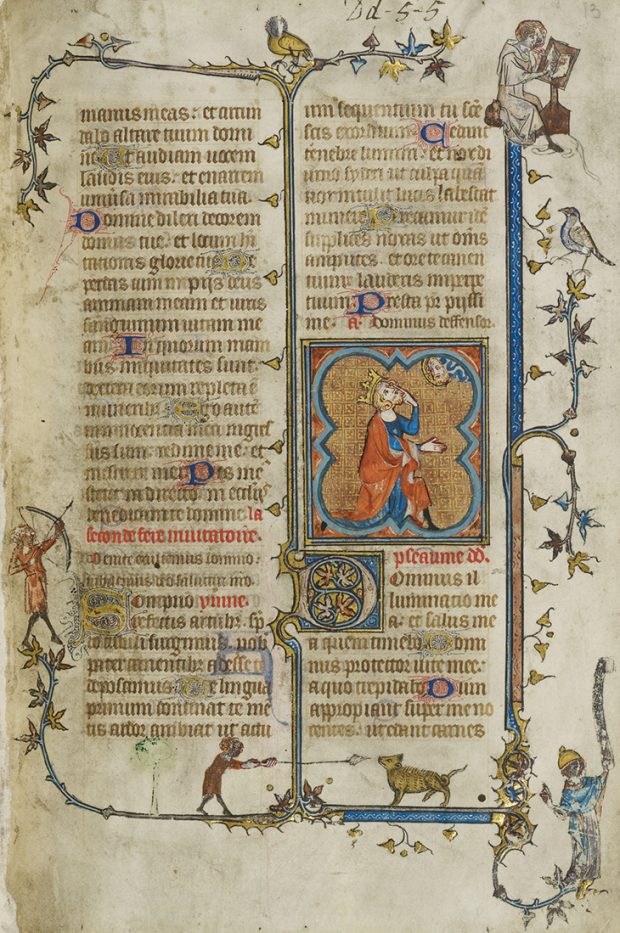
Breviary (1347) belong to Marie de Saint Pol, Countess of Pembroke and the founder of Pembroke College. Cambridge University Library. Creative Commons Attribution-NonCommercial 3.0 Unported Licence
‘The Rising Tide – Women at Cambridge’ is at Cambridge University Library until 21 March 2020.
Unlimited access from just $16 every 3 months
Subscribe to get unlimited and exclusive access to the top art stories, interviews and exhibition reviews.

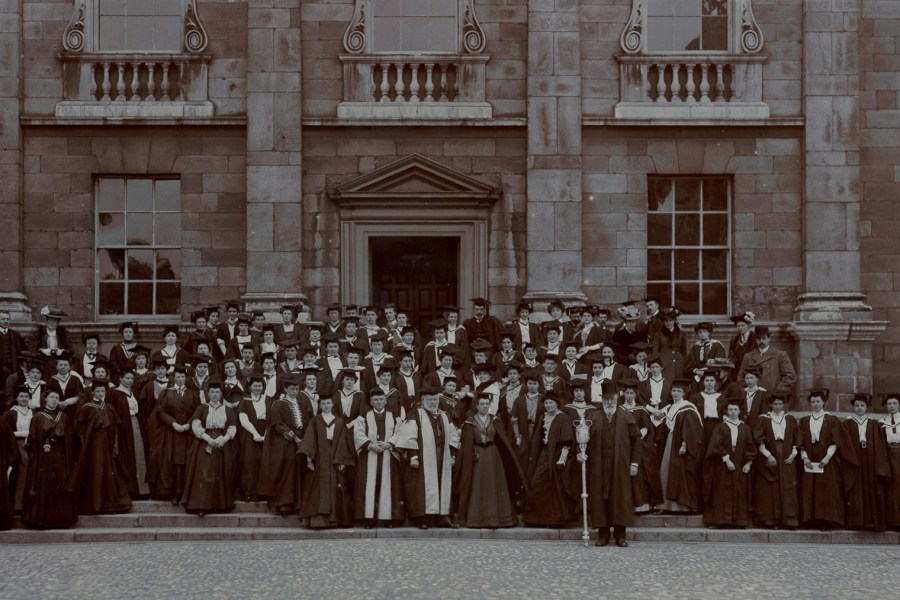
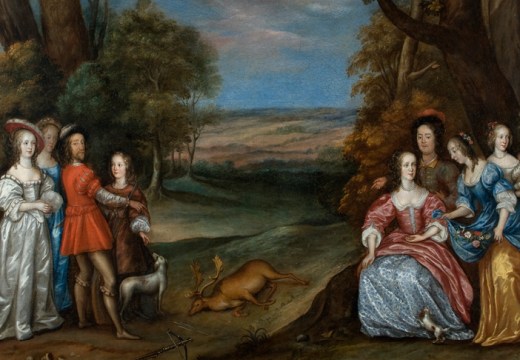
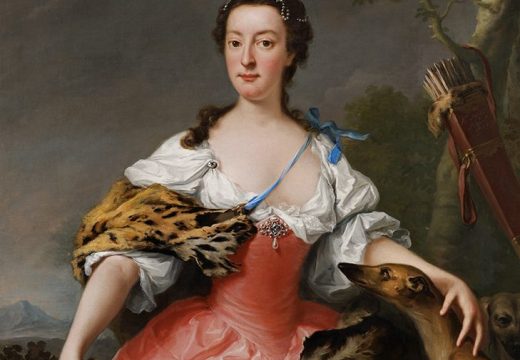
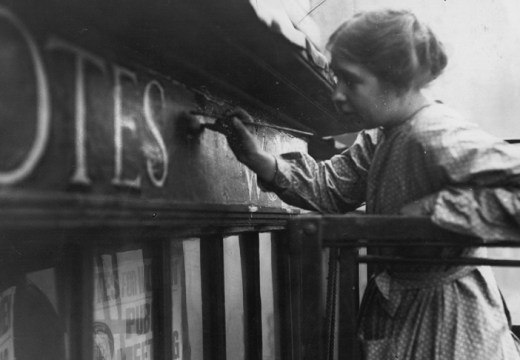









![Masterpiece [Re]discovery 2022. Photo: Ben Fisher Photography, courtesy of Masterpiece London](http://www.apollo-magazine.com/wp-content/uploads/2022/07/MPL2022_4263.jpg)
It’s time for the government of London to return to its rightful home